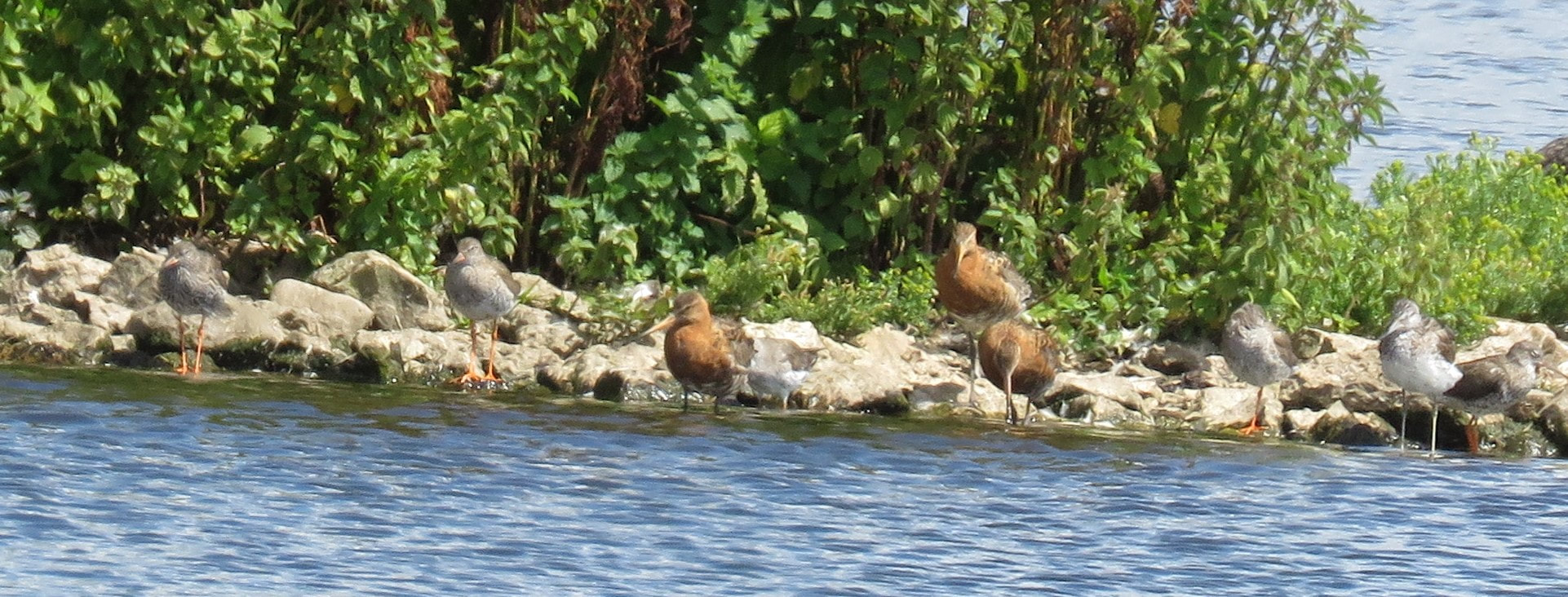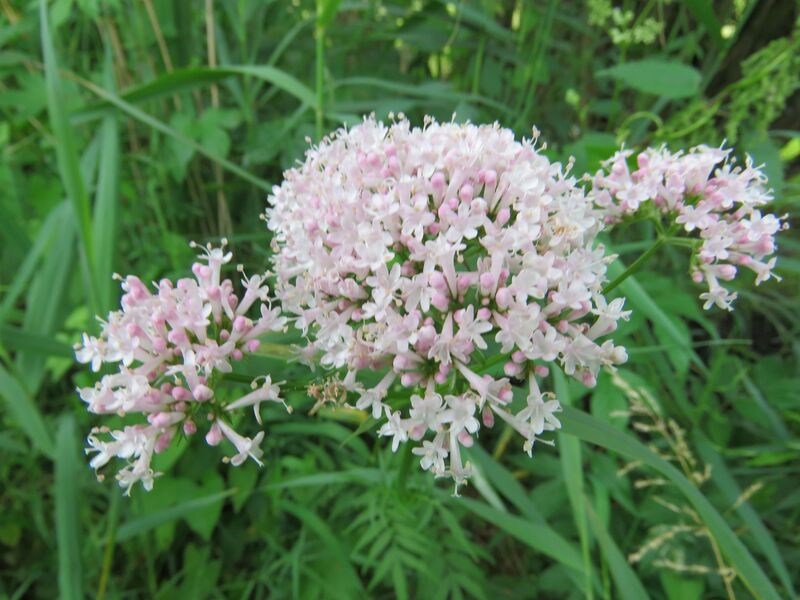 Great Crested Grebe
Great Crested Grebe The morning grew bright and sunny and temperatures rose to about 19 degrees. Extreme temperatures are predicted for 17th-19th July, a record-breaking 40 degrees for parts of the UK. We expected to see butterflies and dragonflies. Vegetation looked lush and tall, refreshed by an overnight shower. We were not alone in our concern at the dearth of insects. A couple were looking for dragonflies, without success. Wardens record sightings at this RSPB Reserve and they confirm this yea's dramatic decline in numbers.
A juvenile marsh harrier flew directly toward us and, like the bittern flight, there was time to relish the sighting. A flock of redshank took flight and glinted in the sunlight. Black-tailed godwit followed them. There's an islet out in the water where cormorant gathered with two juvenile black-back gulls. Amongst them were godwit, redshank and greenshank. At that distance the images aren't sharp but red and green legs (shanks) distinguish them.
Purple loosestrife, Lythrum salicaria also has whorls of flowers on a long spike but petals are separate.
Stamens are pollinated by long-tongued insects, bees, butterflies. We found both marsh woundwort and purple loosestrife at Leighton Moss.
The early afternoon sun lit greater willowherb, codlins and cream, and the breeze swept tall reeds and flowers in and out of camera-shot. A memorable day with good views of bittern and marsh harrier in flight. And the call of redshank, wren and reed warbler, the shimmer of sunlit flocks and sunlight and shadow. Shade is cool, for a photographer and in anticipation of a heat-wave.



















 RSS Feed
RSS Feed